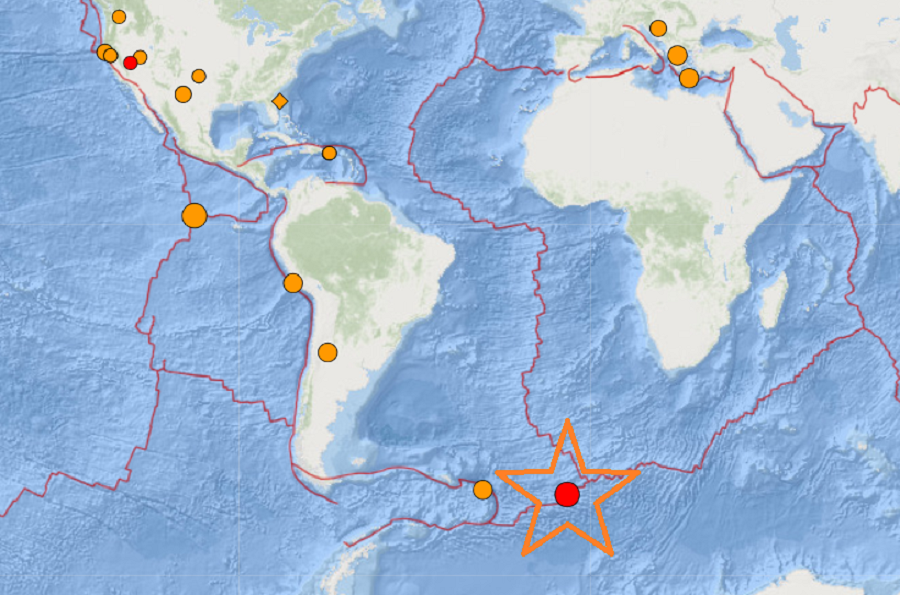
A strong 5.0 earthquake rocked the southern Mid Atlantic ridge this evening; fortunately, it was not strong enough to create a tsunami in the Atlantic Ocean.
According to USGS, the earthquake struck at 7:03 pm ET tonight at a depth of 10 km; the earthquake was centered in a seismically active portion of the Mid Atlantic ridge near 56.703°S 6.028°W.
The southern Mid Atlantic Ridge separates the South American Plate from the African Plate and the Antarctic Plate. As the plates move away and into each other, they can trigger earthquakes as they split above the ridge.
These plates are based on the scientific theory of Plate Tectonics, which describes the large-scale motion of plates making up the Earth’s lithosphere. Scientists believe tectonic processes began on Earth between 3.3 and 3.5 billion years, building upon the concept of continental drift, a scientific concept developed in the early part of the 20th century. Continental drift is the gradual movement of the continents across the Earth’s surface through geological times.
Tsunamis are giant waves caused by earthquakes or volcanic eruptions under the sea. Out in the depths of the ocean, tsunami waves do not dramatically increase in height. But as the waves travel inland, they build up to higher and higher heights as the depth of the ocean decreases. According to the National Ocean Service, the speed of tsunami waves depends on ocean depth rather than the distance from the source of the wave. Tsunami waves may travel as fast as jet planes over deep waters, only slowing down when reaching shallow waters. While tsunamis are often referred to as tidal waves, this name is discouraged by oceanographers because tides have little to do with these giant waves.